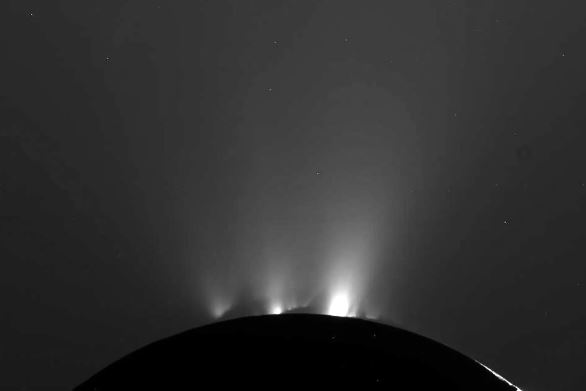Scientists have identified hydrogen cyanide, a lethal gas, in the spray of molecules emanating from Enceladus, a small moon of Saturn. This discovery adds to the intrigue surrounding the possibility of life on Enceladus. Hydrogen cyanide, a colorless gas deadly to many Earth organisms, could have played a crucial role in chemical reactions that formed the ingredients necessary for the emergence of life.
Jonah Peter, a biophysics graduate student at Harvard, described hydrogen cyanide as the “Swiss Army knife of prebiotic chemistry” and emphasized its significance in theories about the origin of life. The research team, including Tom Nordheim and Kevin Hand of NASA’s Jet Propulsion Laboratory in California, published their findings in the journal Nature Astronomy.
Enceladus, approximately 310 miles in diameter, features an icy surface with a subsurface ocean, making it one of the most promising locations to explore for extraterrestrial life within our solar system. The researchers also detected organic molecules like acetylene, propene, and ethane, which could fuel chemical reactions providing energy for potential microorganisms in Enceladus’ ocean. The data also suggested the presence of an alcohol resembling methanol, although definitive identification proved challenging.
Experiments have shown that hydrogen cyanide can be a crucial precursor to molecules necessary for the origin of life. It can combine in various ways to produce amino acids, essential for proteins, as well as nucleic bases and sugars needed for RNA and DNA.
Enceladus was initially considered a mostly bland ice ball, but in 2005, NASA’s Cassini spacecraft revealed plumes of vapor and ice crystals erupting from fractures near the moon’s south pole. The tidal forces of Saturn generate heat through the squeezing and pulling of Enceladus’ interior, leading to the melting of ice. Subsequent analysis indicated hydrothermal reactions beneath the surface, where hot rocks meet liquid water.
While the Cassini mission ended in 2017, scientists continue to examine the data, revealing Enceladus as potentially having a global ocean of salty water beneath an outer ice shell, challenging the initial perception of the moon as a simple ice ball.
Earlier this year, another study identified phosphates in icy particles from Enceladus plumes, suggesting geochemical interactions between the ocean and the rocky floor. Phosphorus is another crucial element thought to be essential for life.
In the recent study, the research team delved into Cassini’s data, utilizing models to identify the presence of hydrogen cyanide and other compounds. Although the amount of hydrogen cyanide is too small to be immediately observed, the researchers utilized a meticulous analysis to gain more insights into Enceladus’ plumes.
The discovery of hydrogen cyanide and other organic compounds in Enceladus’ plumes does not pinpoint the source of complex organic matter in the ocean, according to Alfonso Davila, a researcher at NASA’s Ames Research Center in California. The prospects for life on Enceladus continue to grow more promising, and scientists remain intrigued by the potential for the development of life on this intriguing moon of Saturn.
The findings contribute to the broader exploration of ocean worlds within our solar system, with moons like Europa, which orbits Jupiter, also featuring under-ice oceans. NASA’s upcoming Europa Clipper mission aims to explore Europa further, potentially making similar discoveries.

